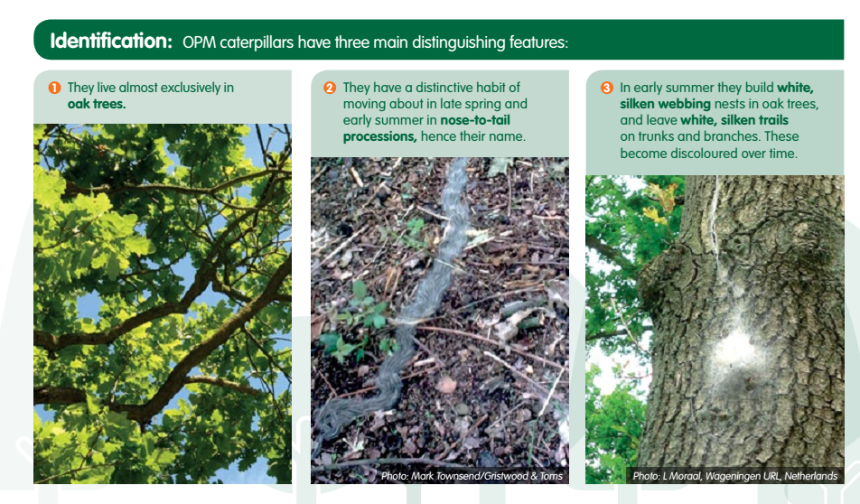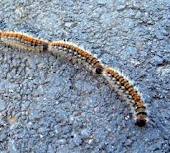Please help us to protect tree, human and animal health, and to control this pest, by spreading the following key messages to the public and oak tree owners:
- Do not touch or approach nests or caterpillars
- Keep children, pets and livestock away from nests, caterpillars and affected trees
- See a doctor or vet if you think you or your animals have been seriously affected
- Report sightings to your local council or the Forestry Commission
- Get a reputable pest control expert to remove infestations in your trees
Use posters, leaflets, web pages, newsletters, media articles and interviews, talks, Twitter and Facebook to spread the message.

I am writing to warn you and ask you to warn everyone you know locally about the dangers to humans, animals and oak trees from the Oak Processionary Moth (OPM). I attach information about it from the Forestry Commission.
If you or anyone you know are out walking and see evidence of OPM presence on a public oak tree DO NOT TOUCH or go near it but immediately call Julian Fowgies at Bromley Council with the location on 020 8464 3333 ext 3225 If the oak is on private land please call 0131 314 6414 (Forestry Commission Plant Health Section).
Last July a significant outbreak of OPM was discovered in the grounds of Royal Bethlem Hospital, at the Shirley end of Beckenham, in Monks Orchard Road. 4000 nests were removed from the Bethlem site alone.
Within 24 hours Bromley tree officers also discovered 3 infected trees situated on Council property, and the nests were removed. Fortunately the number of local infected oaks has not risen as yet. However it is at this time of year that the grey hairy caterpillars are most likely to be seen ‘processing’ in their hundreds one behind the other on branches or along the ground.
The Bromley/Croydon OPM
outbreak is being managed separately from other outbreaks in west London and
elsewhere. The policy here is eradication while we still have a realistic
chance of success. The Forestry Commission is currently co-ordinating a
programme of chemical treatment to all infected trees in the London area and
those within a 50 metre buffer zone of them. 
Specialist contractors are working around the clock in order to treat all the infected trees within the short window of opportunity in the caterpillars life cycle when the chemical is effective. The chemical, Bacillus thuringiensis (Bt), is derived from a micro-organism which occurs naturally in soil. It has been selected because it only affects a small range of species, namely just certain types of caterpillars. It is harmless to humans and animals such as dogs, cats and farm animals.
Please check any local oak trees that you know of and contact Bromley if you find any . Below is a PDF file containing more information.